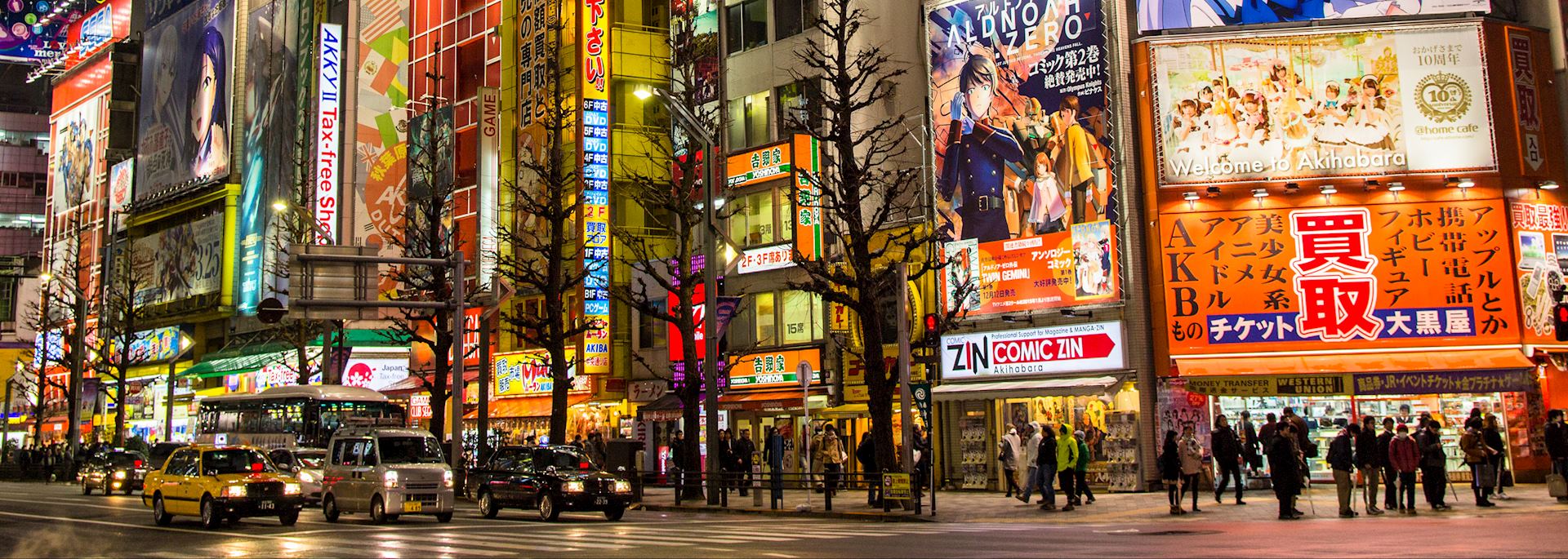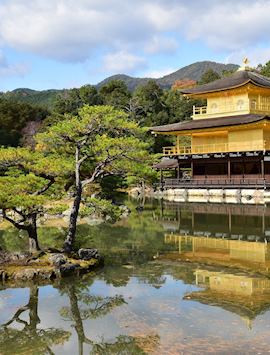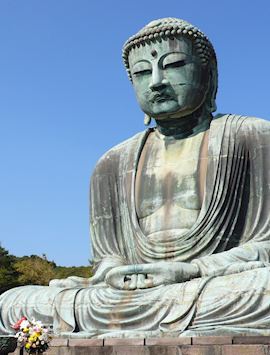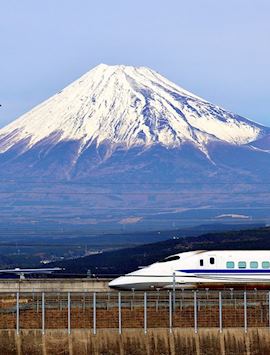By Japan specialist Rory
You don’t need to spend a fortune to experience the idiosyncratic trademarks of one of the world’s wealthiest countries. There are good-value places to stay and economical ways to travel — if you know where to look. I’ve shared some of my recommendations below. Many cost-effective options lead you toward genuinely authentic, local experiences too — from picnicking in parks to staying in a traditional machiya (townhouse) in Kyoto.
Best-value time to travel to Japan

I’m often asked if it’s best to visit Japan for cherry blossom or autumn leaves. Both are indeed head-turning sights, but there’s far more to Japan than its foliage — which is the biggest driver of the cost of a trip.
If you haven’t got your heart set on a specific season, look to Japan’s winter months (December to the beginning of March). It’s an excellent-value time to travel, but you’ll also benefit from far fewer visitors. In a country where tourism has increased fivefold over the past few years, this can really improve the quality of your experience.
Yes, you’ll need a coat, but it doesn’t get particularly cold if you stay farther south — I used to cycle around in a t-shirt. Some places, like the Japanese Alps, are locked off with heavy snow and some walking areas are closed, but you can have similar experiences in the south: look to the island of Kyushu for walking trails and scenic ryokan stays.
A quick caveat on winter travel — avoid Christmas and New Year, when costs tend to spike.
Heart set on seeing the blossom?
Costs soar during cherry blossom season — the buds bloom from around the end of March into the first two weeks of April. For an economical way of taking part in hanami (cherry blossom viewing), you could travel early in March before the blooms arrive and finish in Tokyo, where the first flowers should then be on show. Head to one of the city’s parks to bask under the blossom-laden boughs.
Getting around cost-effectively in Japan

Exploring Japan by rail
Watching the countryside flash past from the comfortable seat of a bullet train is, for me, one of Japan’s standout experiences. Another benefit of visiting during a quieter season is that you can use the Japan Rail Pass.
Much of the rail network, including bullet train routes, is run by the Japan Railways Group. Using its Japan Rail Pass, available for 7, 14 or 21 days, can be a very economical way to explore the country. The pass also includes unlimited access to the Japan Rail Network, providing you with chances to visit the surrounding towns and villages that aren’t on the bullet train route.
If you’re visiting during a busy season, you can still use the rail pass, but booking seats can be challenging. It might be more cost-effective to buy single tickets instead. I always carefully weigh up the best option when I’m arranging a trip, and I suggest talking to your specialist who can help you decided on the best option for your route.
Public buses, metros and trams in Japan
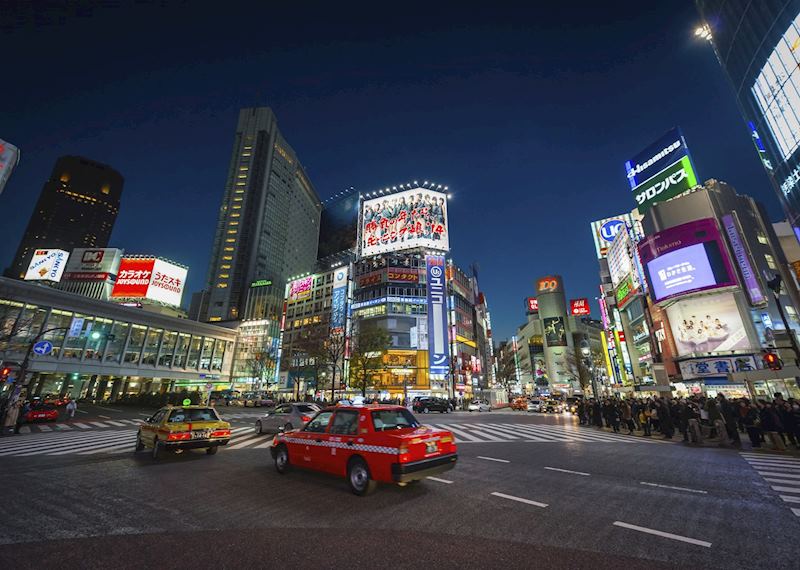
Although taxis are metered and prove relatively reasonable for short journeys, there are buses, metros and trams to help you get around without the need for always hailing a cab.
Generally, using the undergrounds in Tokyo and Kyoto costs less than riding the Tube in London or the New York Subway. The PASMO card (which we include as standard in our itineraries) is a tap-on, tap-off preloaded card that makes travel on Japan’s undergrounds simple. We’ve partnered with the charity Second Harvest Japan so that at the end of your trip any leftover balance can be donated and your card recycled.
At first, Japan’s transport system may look bewilderingly complicated, but you’ll find signs in English and clearly annotated maps. When you travel, we’ll provide detailed instructions to help you navigate, such as which exit to take from a train station. The stations usually have a convenience store where you can stock up on snacks for the journey.
How to limit your daily spend in Japan

While the up-front costs of a trip to Japan can add up, you don’t need to budget as much as you might think for your daily expenditure (unless you’re hopping between the country’s Michelin-starred restaurants).
Firstly, tipping is a cultural no-no — if you try, you’ll be refused. Secondly, entrance fees are relatively low compared to, say, a museum in New York or a London gallery.
Take an orientation tour in Tokyo
The cost of privately guided tours can add up, but you don’t necessarily need one every day. Instead, I suggest investing in a private orientation tour of Tokyo with an experienced guide when you arrive.
Moving around the city on the underground and by bus, your guide will give you a how-to lesson on the workings of the transport system, making it easy for you to explore independently during the rest of your stay. And, if you can tackle Tokyo, you can easily handle the smaller cities and towns.
Opt for a small-group cultural experience in Kyoto
A private tea ceremony is a custom revered by Japanese businesses and wealthy families, so it can cost a small fortune to attend one. From my experience, if you’re happy to share, it becomes an affordable option. The Women’s Association of Kyoto runs a two-hour ‘Introduction to Japanese Culture’ session, including a tea ceremony, for groups of up to ten people.
I found the group size small enough to still feel intimate. There was plenty of space to watch the tea master as she performed a series of precise steps to prepare the matcha (powdered green tea). You’ll also try your hand at origami and there’s the opportunity to try on a traditional kimono.
Eating out inexpensively in Japan
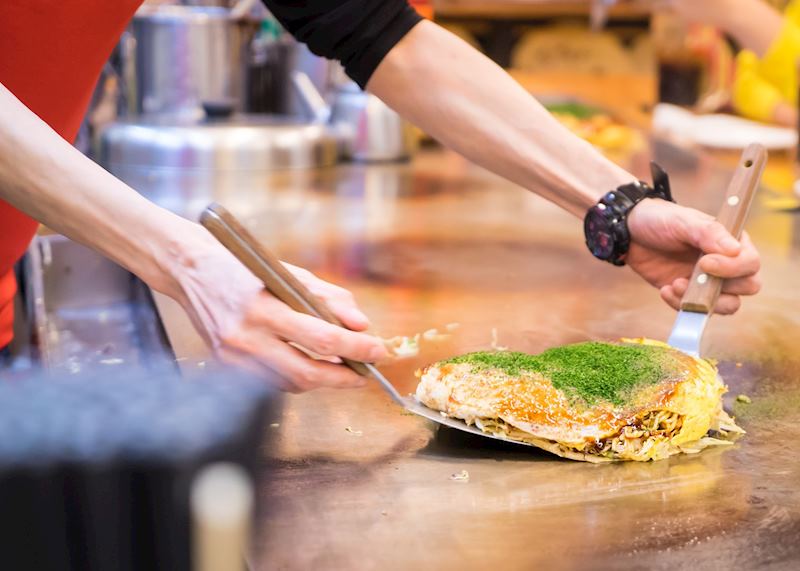
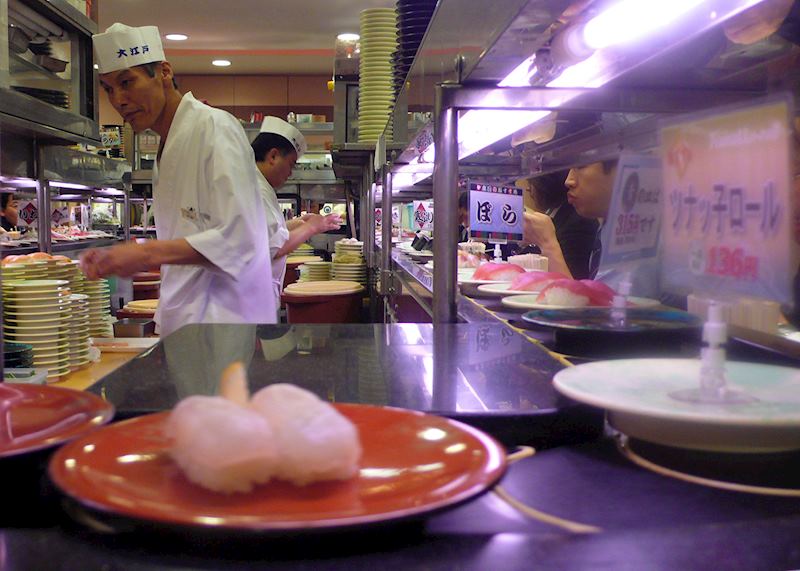
Most working Japanese rarely use their kitchen, and eating out has become an important part of the culture. Some of the most satisfying dishes are to be found in places local people head to for lunch or dinner — you can read more in our guide to Japanese food.
Take a guided food tour
Even when I lived in Japan, I never found the places that my guide, a student at Kyoto University, took me to on an evening tour across the city. Kyoto is known as the sophisticated capital of Japanese culture, and most people splash out on a kaiseki dinner here — the equivalent of a high-end tasting menu. I advocate the experience, but I’d also take a food tour for a well-rounded insight into Kyoto’s dining scene.
You’ll visit a range of small, local restaurants in a group of four to six people, sampling fresh sashimi and gently warmed sake along the way. As with the Tokyo orientation tour, I find it helps you gain the confidence to try some of the smaller, local (and often very good value) eateries independently too.
Grab lunch at a convenience store
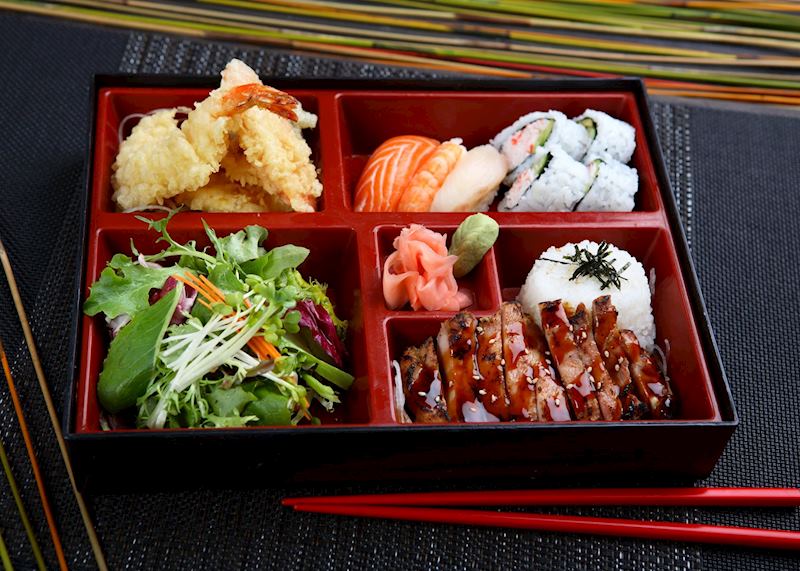
Convenience stores, like the ubiquitous 7-Eleven are great for an on-the-go lunch, sometimes offering better quality food than restaurants, and a reliable source of good coffee. You can pick up onigiri (rice balls) and bento boxes (pre-packed lunchboxes with a mix of snacks) — there’s usually a park close by where you can picnic. The packaging often has pictures of the ingredients, so you can work out what’s inside.
Peer into the hot-food counter next to the cashier and you can usually find some local delicacies — I recommend a pork-filled steamed bun.
Dine on conveyor-belt sushi
Kaiten, or conveyor-belt, sushi restaurants are an economical way to experience sushi — you determine how much you eat and how much you pay. Dishes are colour coded, depending on the grade of fish, and you simply stack up your plates and pay at the end. Tea and miso soup are usually poured on a free refill basis. You’ll find them in most cities and towns.
Finding good-value accommodation in Japan
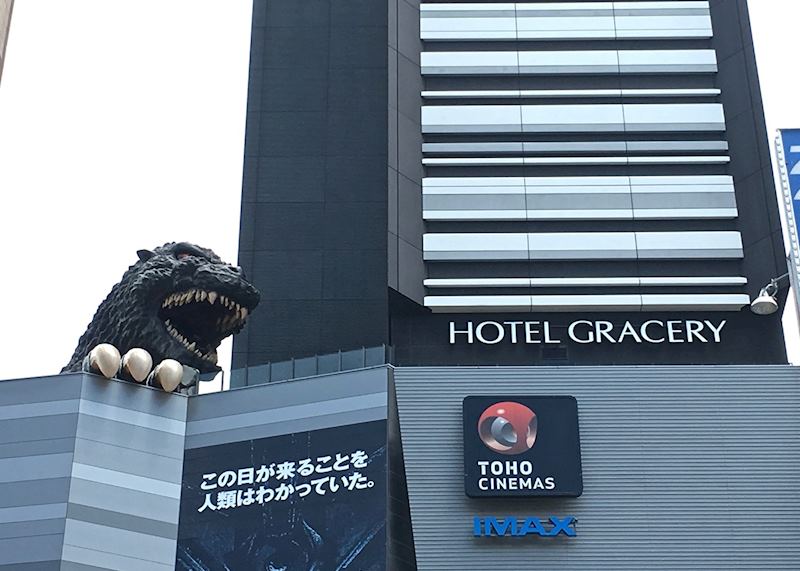
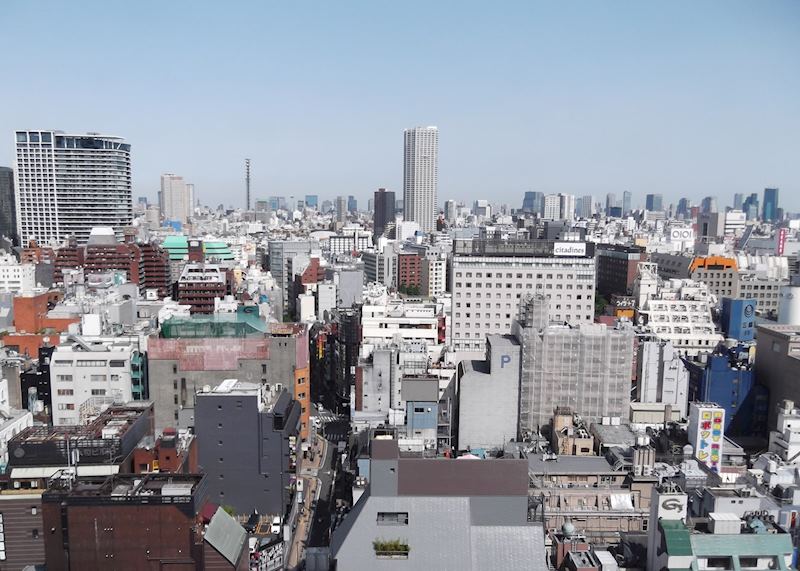
You don’t have to compromise on location to stay in a moderately priced Tokyo hotel as most are in the middle of the city. The rooms may be small — to be expected in a city this full — but the quality is consistently high.
I normally opt for Hotel Gracery Shinjuku, a reasonably priced property a few minutes’ walk from Shinjuku Station, one of Tokyo’s main hubs. Rooms are designed with convenience and efficiency in mind. At first glance, it’s a regular glossy tower block. But, if you look closely, your eyes will meet a giant Godzilla head peeking over the roof of the hotel’s observation deck (the hotel is built on the site of the popular 1950s Shinjuku Koma Theater).
Kyoto’s townhouses
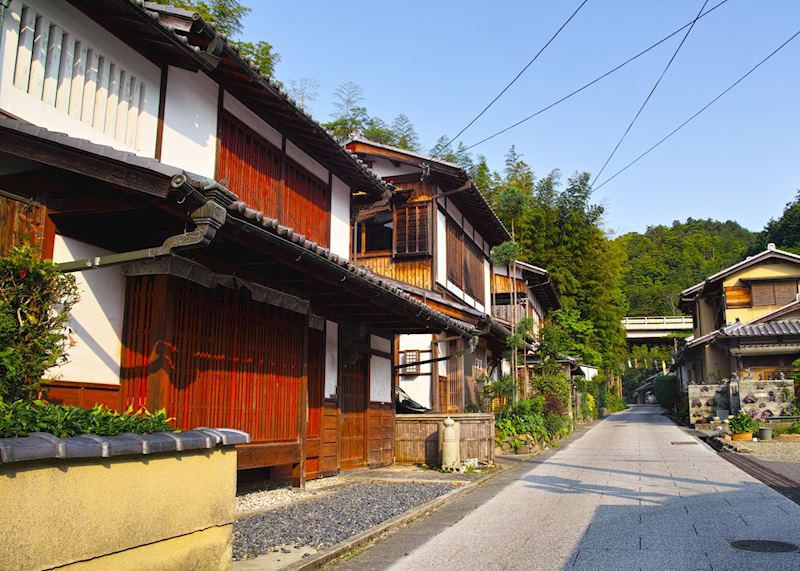
Residents of Kyoto have begun to turn some of the city’s traditional machiya (townhouses) into visitor accommodation. An economical choice for families or groups of friends, these 19th-century wooden-fronted houses are usually built over two floors, configured with a number of bedrooms.
You’ll have the whole house to yourself, with plenty of space to relax. Amenities include a fully-fitted kitchen to try some home cooking and a washing machine to save on expensive laundry bills. Find out more in our machiya guide.
Stay in well-priced traditional Japanese accommodation

A ryokan is a family-run inn that feels like a guesthouse. On arrival you’ll be welcomed with a bow, and provided with a pair of slippers — it’s customary to remove your shoes at the entrance of the inn. You’ll be ushered to your room with tatami-mat flooring and a comfortable futon. Many traditional ryokan are hundreds of years old and come with a feeling of character that Western-style hotels can’t match.
Kaiseki dining, an elaborate multi-course dinner of traditional dishes, is an expensive experience in a restaurant or hotel, but stay in a ryokan and it’s part of the package. Each dish is a delicately prepared medley of local produce and the menu often includes sushi, soups and meat grilled at the table.
For some of the best ryokans, look to those in a rural setting — I suggest the Japanese Alps. Here you’ll find a range of four- to ten-room family-owned properties overlooking thick pine forests or snow-tipped peaks.
Start planning your trip to Japan
Start thinking about your experience. These itineraries are simply suggestions for how you could enjoy some of the same experiences as our specialists. They're just for inspiration, because your trip will be created around your particular tastes.
View All Tours in Japan